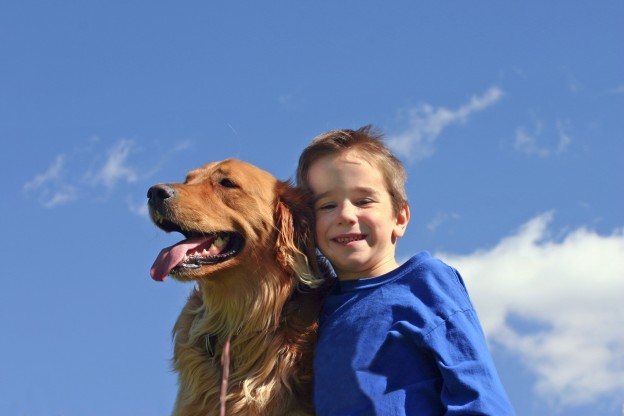
Dogs and kids go together like bees and honey, so Tim Falk investigates how you can ensure your children and your pooch get along
For children all across Australia and around the world, growing up with a dog is one of life’s joys. Dogs bring love, companionship and an understanding of responsibility into a child’s world, and sometimes it almost seems like dogs were made with children in mind.
“The family benefits of owning a pet are numerous and well documented,” says Dr Lewis Kirkham, a veterinarian with further qualifications in animal behaviour. “Studies have shown that children who own dogs are less self-centred, have higher self-esteem, have greater empathy and are more caring.
“Research shows that children who own dogs are more popular with their peers, have better communication and social skills and develop friendships more easily. Owning a dog decreases feelings of loneliness,” he says.
But despite the many benefits that pet ownership has for children, sometimes child–dog interactions can end in tears. Approximately 70 per cent of all dog bites occur in or around the home and are from a dog familiar to the child. This may be the child’s own dog, or a friend’s or a neighbour’s dog.
“More than half of all dog bites are related to innocuous activities such as playing with or near a dog, cuddling or feeding a dog and walking past a dog. The most at-risk age group is the under-five-year-olds,” Dr Kirkham says.
Know your dog
Dog bites occur around the home for a variety of reasons. “It may be that the adults that are supervising feel they can ‘trust’ their dog in any situation. It may also be that adult owners are unable to accurately read their dog’s body language to realise that their dog is uncomfortable being approached or interacted with the way they are encouraging their child to,” Dr Kirkham says.
It’s therefore vital for parents to educate themselves on the subtle body language of their dog so that they can then educate their children. Some of the signs of anxiety in dogs include yawning, lip-licking, turning away, looking away, stiff body posture and even licking the child on the face or hands.
Similarly, children need to be taught how to behave around dogs. Dr Megan Parker, professional services veterinarian at Novartis Animal Health, says children need to be taught to enjoy but respect dogs. “It is important that they learn to avoid actions which may irritate a dog. Children should be taught to ‘let sleeping dogs lie’ and not approach an unfamiliar dog without first asking its owner, and especially not to approach a dog that is eating its food,” she says.
Owners can also take steps to ensure their dog is as well-behaved as possible. Socialisation from an early age is a must, while attendance at a puppy pre-school can also be extremely beneficial. “‘Manners training’ is important, rather than ‘obedience training’. It is imperative that the dog be taught to ‘calm’ itself,” Dr Parker says.
The importance of supervision
The Australian Veterinary Association and paediatricians recommend that no child below the age of eight to 10 should be left alone with a dog without supervision. Appropriate supervision is referred to as “a responsible adult being located within arms’ length from the child and the dog”.
“Both young children and dogs can move very fast and both are unpredictable in their behaviour, so the supervising adult needs to be close enough to intervene if necessary,” Dr Parker says.
Even a dog that is usually friendly and placid may occasionally have a bad day or feel unwell for some reason, and it therefore may be more irritable than usual and may respond to a child in a different way from usual. “Also, a child may not read the warning signals a dog is clearly sending that it is getting irritated. For example, if a dog bares its teeth a small child may interpret this as the dog smiling — a recipe for disaster,” Dr Parker says.
Getting to know your dog’s warning signals and offering adequate supervision can go a long way towards ensuring that disaster never occurs. With a sensible approach and an emphasis on education, your children and your dog can be free to do what they do best — enjoy each other’s company.
Dr. Parker gratefully acknowledges the support of Dr Kersti Seksel, registered veterinary specialist in animal behaviour, for providing up-to-date specialist scientific opinion on these matters.
Tips for kids
Dr Kirkham offers several tips on how to teach your children to behave around dogs:
• Hugging and kissing dogs is not OK.
• Children should be taught to leave dogs alone when they have food, treats or are sleeping.
• For unfamiliar dogs that may approach “off-lead” in the street, children should be taught to stand still like a tree, look at the ground and ideally not interact with the unknown dog.
• For unfamiliar dogs with owners present, teach children to ask permission from the owner first before patting the dog. Parents should also be present to enable supervision and assessment of the dog’s body language to ensure it is comfortable with the interaction.
Make sure your furry friend is always looked after at our DOGSLife Directory




